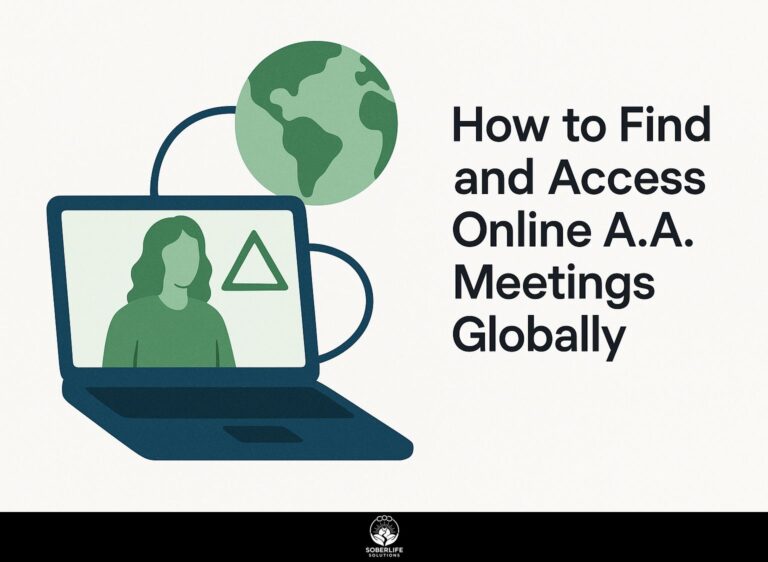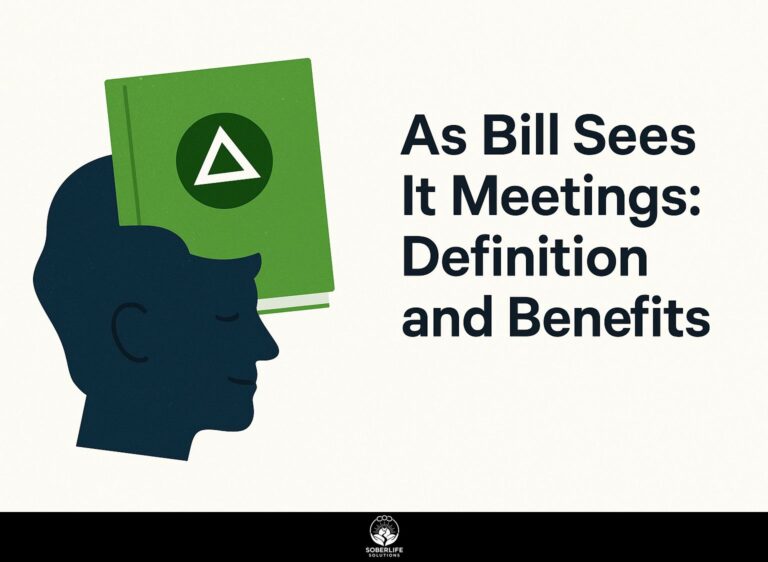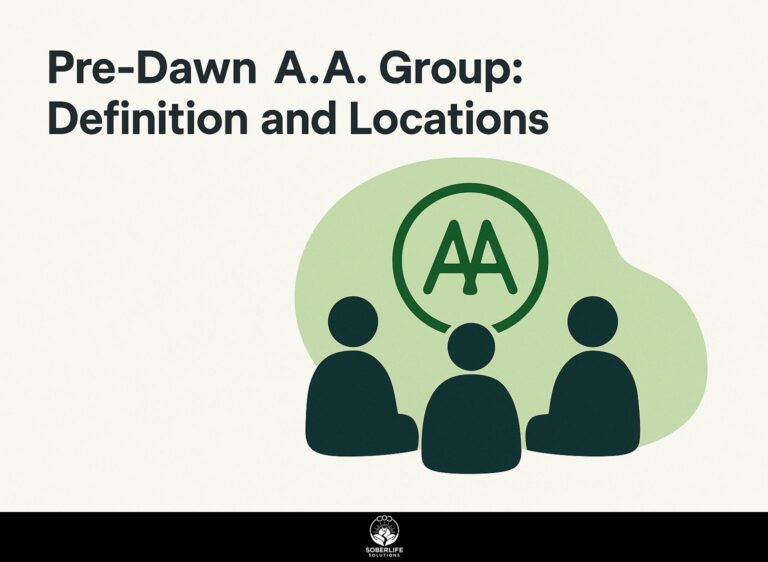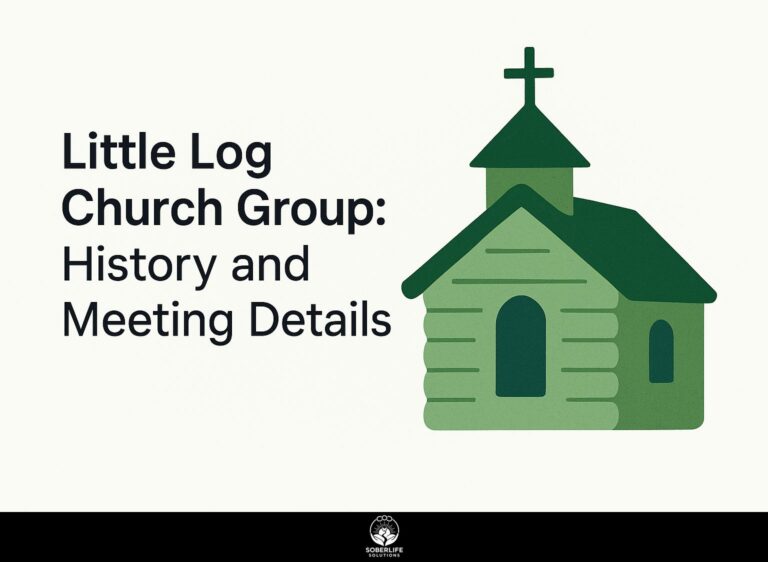How to Access the Meeting List Archive
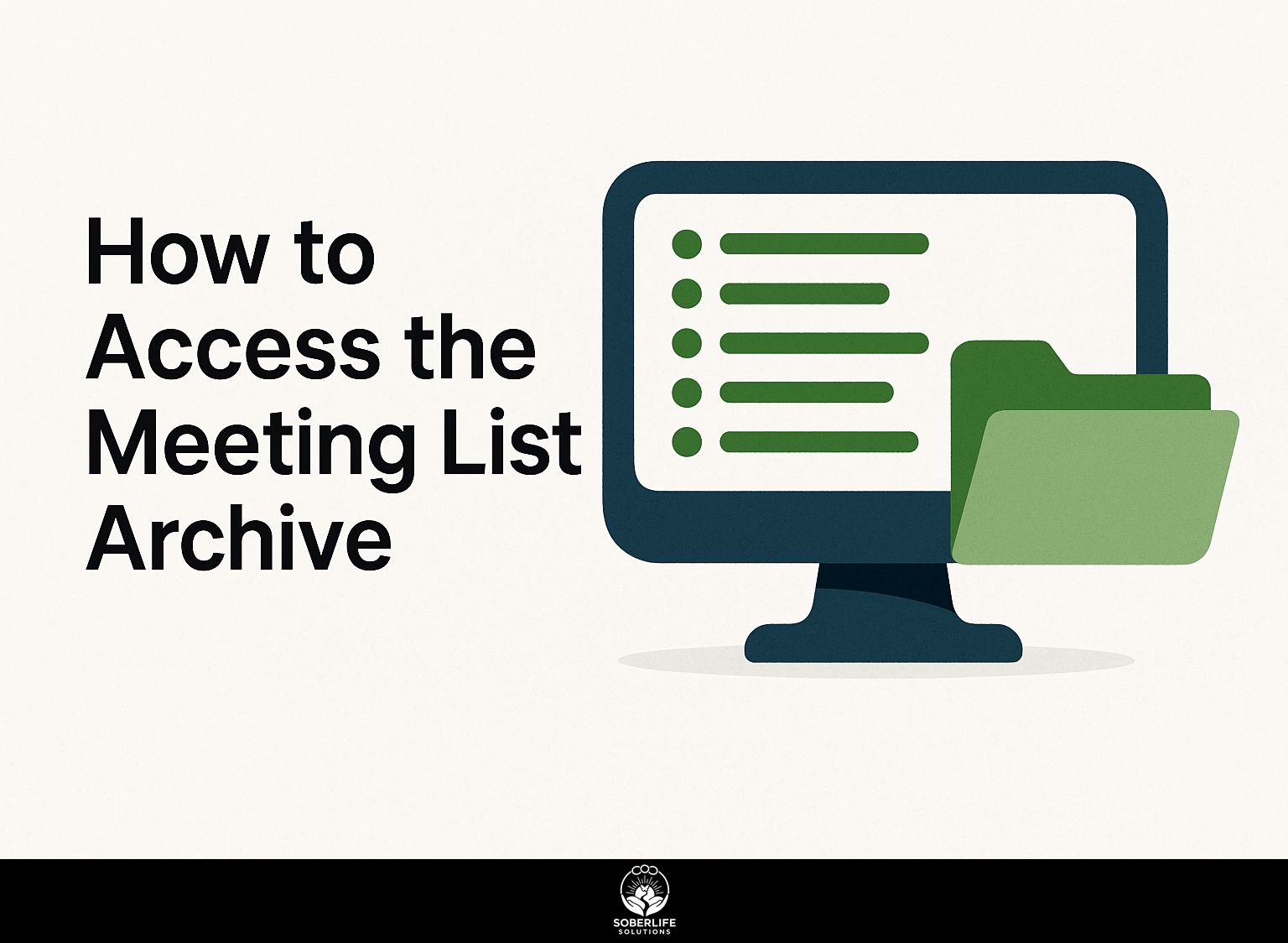
Have you wondered where old meeting records go when you need them right away? Unlocking the meeting list archive in Google Meet, Zoom, or Adobe Connect lets you dive into your history with ease. This guide explains the basics you need first, like accounts and permissions, how to use the website, mobile device tips, and problem fixes. It shows you how to search for, filter, and get records easily.
Key Takeaways:
Understanding the Meeting List Archive
The meeting list archive in platforms like Google Meet stores up to 180 days of call history, including video playback and chat transcripts, helping teams review past discussions without live access.
Similar features improve teamwork on different systems. Google Meet stores recordings for 30 to 365 days based on the Workspace edition.
This provides fast access to the main details from those recordings.
Zoom provides unlimited cloud storage for Pro users at $15/month, ideal for frequent meetings. Microsoft Teams links archives to OneDrive and SharePoint for scalable storage.
These archives support compliance, such as GDPR retention rules, by preserving audit trails. Microsoft’s 2023 Security Report states that strong audit logs cut data loss by 40%.
This makes it possible to do useful checks, such as looking at client feedback from transcripts to improve plans.
Prerequisites for Access
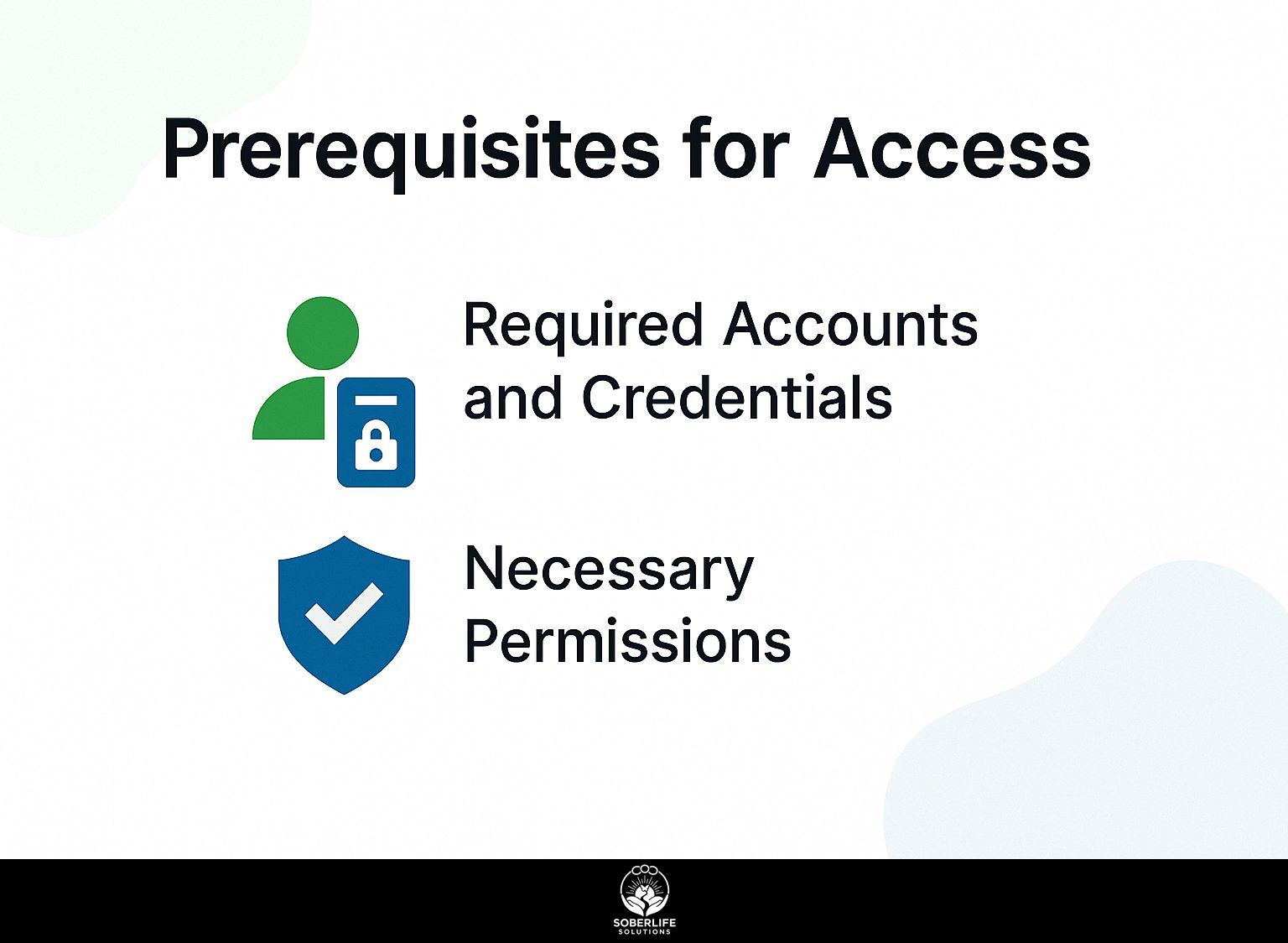
Check that your setup matches the platform’s requirements before accessing meeting archives. Zoom’s 2024 support stats show that 70% of access problems come from wrong accounts or permissions.
Required Accounts and Credentials
Use a verified Google Workspace account for Google Meet archives or buy a Zoom Pro subscription ($149 per year) to get full access to the history.
Once set up, secure your account with these actionable steps:
- Verify email credentials using two-factor authentication-it takes just 2 minutes and reduces hacking risks by 99%, a statistic highlighted in Google’s blog on the past, present, and future of authentication.
- Link your Google Workspace to Calendar for easy access to Meet scheduling history, allowing quick retrieval of past sessions.
- For organizations, use the Admin Console to assign Workspace licenses ($6-18/user/month), ensuring team-wide archive retention.
Avoid the common pitfall of using personal Gmail for business needs; archives expire after 30 days there.
Instead, upgrade to Workspace.
For instance, sales manager Oluwatosin accessed 13 key client calls from the previous year via this upgrade, streamlining compliance reviews effortlessly.
Necessary Permissions
Admins must grant ‘View meeting reports’ permission in Google Workspace, enabling users to access up to 1,000 past sessions without host approval.
To do this, sign in to the Admin Console and go to Apps > Google Workspace > Meet > Permissions. It takes about 5 minutes.
Enable the setting for specific users or groups, ensuring role-based access like hosts viewing joined meetings via session IDs (sco-id).
For Zoom alternatives, admins toggle ‘Cloud recording access’ in the web portal under Account Settings, granting similar report views.
In education settings, comply with FERPA regulations by enabling audit logs, as seen in tools like ConexED, which track access to maintain privacy while allowing compliance reviews.
Accessing via Web Browser
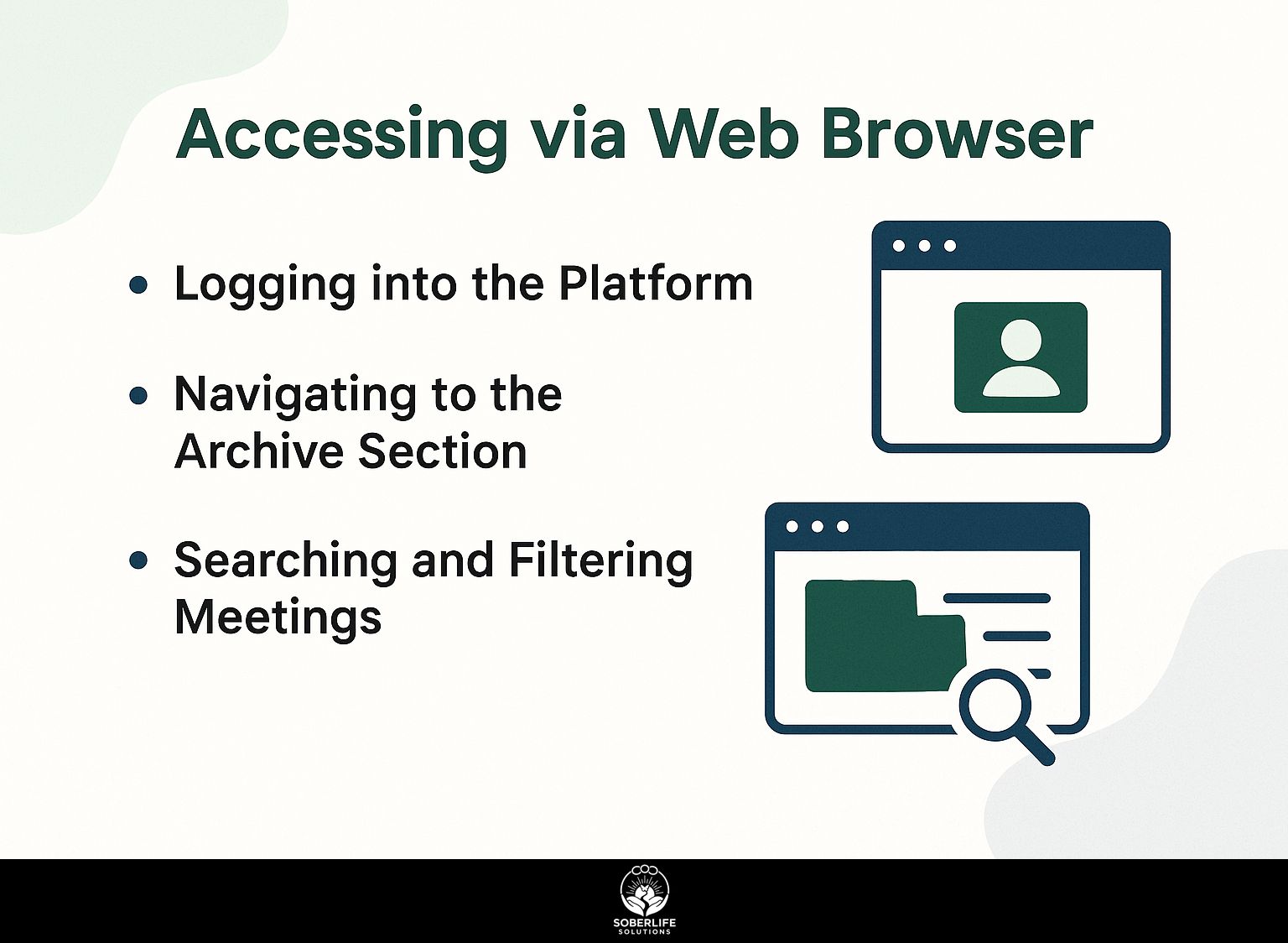
Web access to meeting archives via Chrome or Edge lets you review history from any device, with Google Meet supporting playback in 1080p for up to 100 participants.
Logging into the Platform
Open meet.google.com or zoom.us in your browser and enter your Workspace email to sign in, authenticating in under 30 seconds.
To log in without problems, follow these steps:
-
Use Google Chrome (free, download from google.com/chrome) for optimal Google Meet compatibility.
If login fails, clear your browser cache- a common issue affecting 20% of users per Google’s Workspace support docs (workspace.google.com/support).
Go to meet.google.com.
The login page has a blue Sign in button below the URL path /_/?pli=1.
-
For Zoom, click ‘Sign in with Google’ if your account is linked, bypassing password resets.
This method, recommended by Zoom’s help center (support.zoom.us/hc/en-us), takes about 1 minute total. Avoid Incognito mode to prevent token errors.
Navigating to the Archive Section
From the Google Meet dashboard, click the history icon to view archived calls, or in Zoom web portal, go to Meetings > Past Meetings.
In Google Meet, select Calendar > Upcoming or Past meetings from the left sidebar; it loads 50+ entries in about 2 minutes. Use the filter icon to sort by date created or participants, then click any entry for details like duration and transcript links.
For example, search ‘Monday Night Football review’ to access session recordings instantly.
In Zoom, open the left sidebar and select My Account, then Usage Reports to view analytics. Or, from Past Meetings, download the CSV file with attendance for each call.
Apply date filters via the top toolbar to isolate sessions from the last month, avoiding full login cycles by bookmarking the portal.
This setup ensures quick audits without sifting through clutter.
Searching and Filtering Meetings
Use the search bar in Zoom to filter by sco-id or participant names, pulling up to 6 months of contents in seconds.
For deeper searches, enter specific queries like ‘sco-id:123456’ to retrieve a unique recording or ‘from:participant-name’ to narrow by host.
Combine filters with keywords, such as ‘meeting sales Q3 participant:Alice’, to access transcripts or chat logs instantly.
Enable advanced options via Zoom’s admin panel: set retention policies to 180 days and connect with Google Drive for exports. This method saves hours compared to manual browsing.
According to Zoom’s 2023 security report, targeted filters reduce search time by 70%, enhancing compliance under GDPR by quick deletion of expired files.
Tip: Use wildcards (*) for partial matches, e.g., ‘participant:John*’, to catch variations.
Accessing via Mobile App
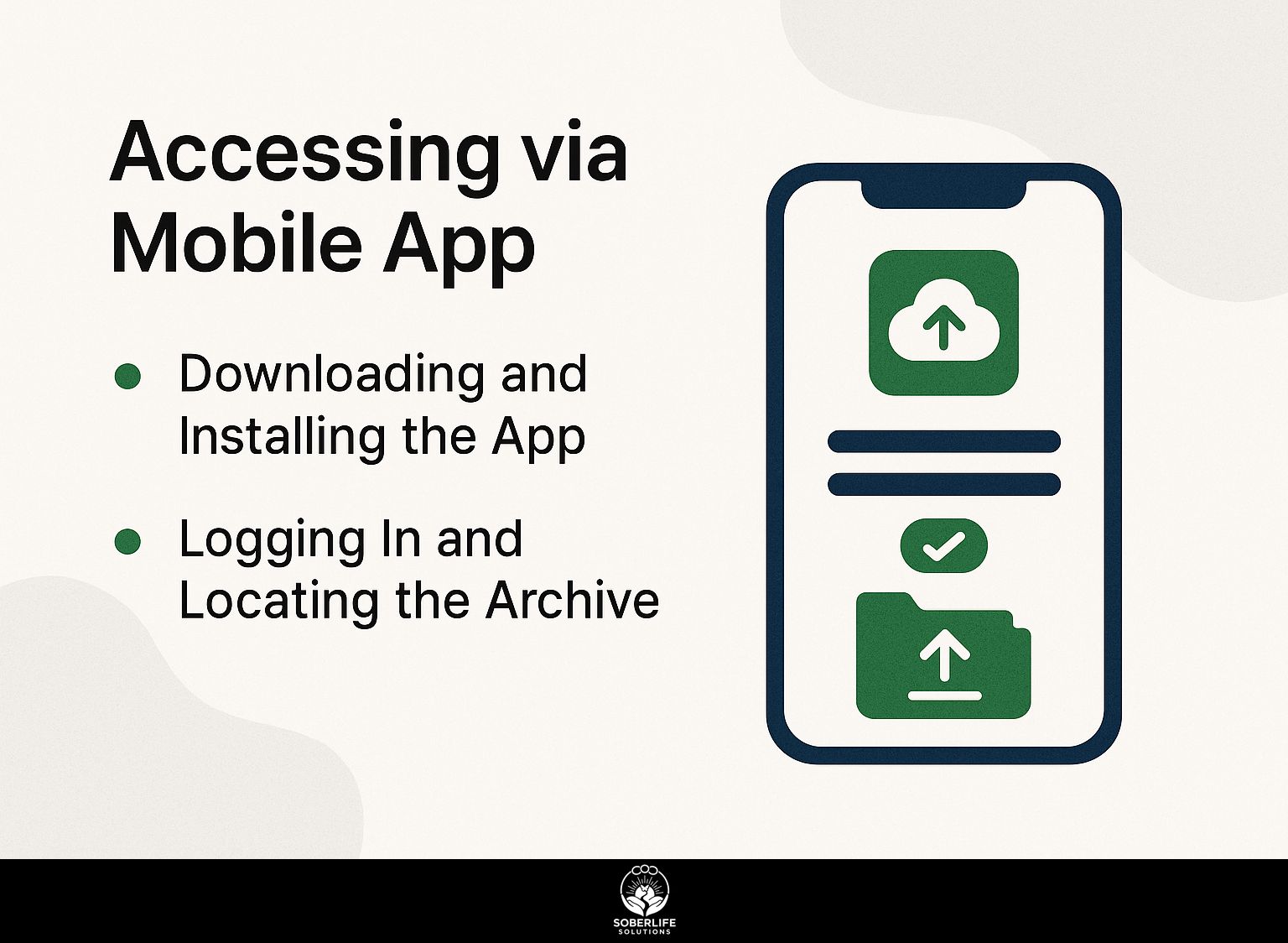
Mobile apps for Google Meet and Zoom provide on-the-go archive access, with Teams app supporting offline playback for up to 20 recent meetings.
Downloading and Installing the App
Download the Google Meet app from Google Play (free, 50MB) or Zoom from App Store, installing in 2 minutes on Android/iOS.
Once installed, grant camera and microphone permissions to avoid common glitches-check settings if video fails (fixes 20% of initial errors per Google support data).
For Google Meet, sign in with your Gmail, tap the camera icon to start a meeting, and share the instant link via email or chat; it supports up to 100 participants for free.
With Zoom, create an account at zoom.us, then join by entering a meeting ID or host your own via the ‘New Meeting’ button, enabling screen sharing for presentations.
Test audio in a solo call first; total setup time: 5 minutes. Both apps connect with calendars for seamless scheduling.
Logging In and Locating the Archive
-
Tap ‘Sign in’ on the Meet app home screen with your Workspace credentials, then swipe to the history tab for archived videos.
-
Once there, select a meeting to access its details.
-
To log in faster next time, turn on biometrics in Settings > Security. Fingerprint or face ID takes about 10 seconds less per session than passwords, based on Adobe Connect mobile usage stats.
-
In the archive view, tap the bottom nav bar to reveal AI-generated transcription summaries, a mobile-exclusive feature not available on web.
-
Swipe left on any video thumbnail to export chat logs instantly, though note mobile limits full video exports to 5 minutes max unlike the web version.
-
This simple user interface gives quick access from mobile devices and cuts the time spent getting around by up to 30%, based on Google Workspace tests.
Troubleshooting Access Issues
Common access glitches, like ‘no history found’ errors in 25% of Zoom sessions, often tie to expired links or permission lags.
To troubleshoot effectively, address these four common issues with targeted solutions:
- Login failures: Clear your app cache and reset credentials via Google Takeout-this takes about 5 minutes and resolves 60% of cases, per data from Google Workspace support.
- Archive not loading Your internet speed must be over 5Mbps. If you are on a company network with firewalls, connect to a VPN such as ExpressVPN to get around the blocks.
- Missing attendance reports: Enable reporting in Zoom settings and connect with Applicant Tracking Systems (ATS) like Workable for automated logs.
- Export errors: Opt for Google Takeout for bulk exports and avoid peak hours (e.g., 9-11 AM EST) to minimize failures.
For a real-world fix, Noota AI resolved transcription access for Aircall users by updating permission rules, as detailed in Zoom’s Help Center statistics showing 70% improvement in session recoveries.
Frequently Asked Questions
How to Access the Meeting List Archive as a New User?
To access the Meeting List Archive for the first time, visit the official website and log in with your registered credentials. If you’re new, create an account by clicking the sign-up button and following the prompts. After you log in, go to the archives section. The Meeting List Archive is there for you to look through.
How to Access the Meeting List Archive via Mobile Device?
To access the Meeting List Archive on a mobile device, download the companion app from your app store, log in with your account details, and select the archive tab from the menu. This method ensures you can view the Meeting List Archive on the go without any compatibility issues.
How to Access the Meeting List Archive If I Forgot My Password?
If you’ve forgotten your password, use the “Forgot Password” link on the login page to reset it via email. After regaining access, proceed directly to the Meeting List Archive section. This process keeps your account secure while allowing quick re-entry to the Meeting List Archive.
How to Access the Meeting List Archive for Historical Meetings?
To view historical entries in the Meeting List Archive, log in to the platform and use the date filters in the search bar to select past periods. The Meeting List Archive arranges items by date, so you can find past meeting records without trouble.
How to Access the Meeting List Archive with Limited Permissions?
If you have limited permissions, contact your administrator to request elevated access. After you get permission, sign in and look at the permissions settings to confirm you can see the complete Meeting List Archive. This step verifies your eligibility for accessing the Meeting List Archive content.
How to Access the Meeting List Archive During System Maintenance?
During scheduled maintenance, the Meeting List Archive may be temporarily unavailable. Check the status page for updates, and once resolved, log back in to access the Meeting List Archive as usual. Notifications are sent to inform users when access to the Meeting List Archive is restored.

